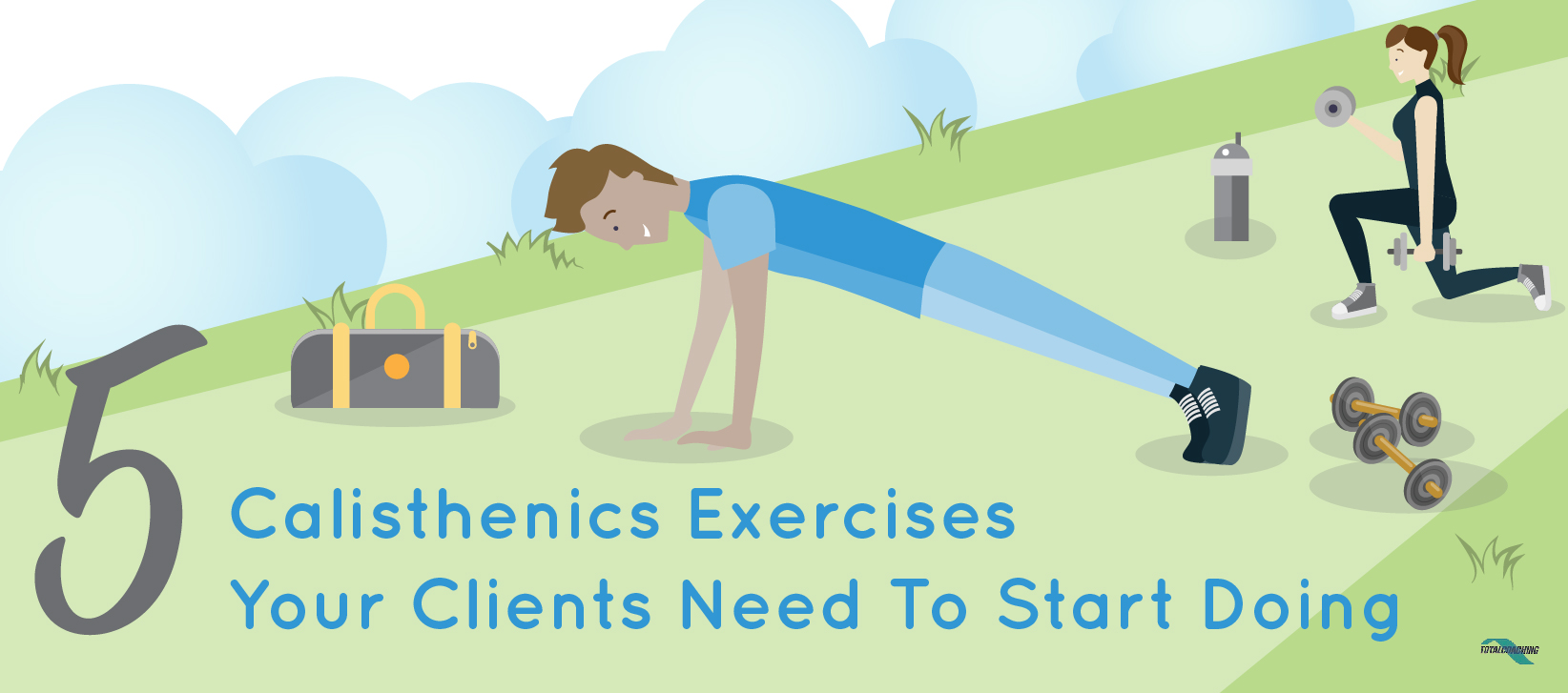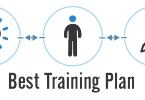Calisthenics exercises are a form of bodyweight training that come from the Greek words for ‘strength’ and ‘beauty’.

In the purest form, Calisthenics allows us to master our own bodyweight in the pursuit of improving our physical health and fitness.
Calisthenics is currently the fastest growing fitness trend according to the 2015 American College of Sports Medicine (ACSM) World Wide Survey of Fitness Trends. And it’s no surprise when you see the amazing feats of seemingly ‘impossible’ strength!
Is Calisthenics Training ‘Impossible’ For My Clients?
Your reaction as a personal trainer when you see calisthenics movements like Human Flags, Levers, or Muscle Ups might be, “That’s far too advanced for my clients” and you may question the relevance for the average gym user.
On the other hand you may have seen these calisthenics movements and been inspired and motivated to use them both in your own training and potentially with your clients. But maybe you just aren’t sure where to start?...
At the School of Calisthenics our school motto is “Surge et surge iterum donec agni leones fiunt” which translates from the latin to:
“Rise and rise again until lambs become lions!”
We do not give up when facing the "impossible" and neither should you or your clients. Let's take a look at some of the benefits of training with Calithenics training and then we'll dive into 5 key exercises you can start using with your clients today.
Benefits of Calisthenics
Calisthenics has many benefits as a training method. They are not just physical, but also the mental benefits that really get people hooked into calisthenics:
Mental Benefits
Calisthenics exercises are great for motivating clients and setting goals. The focus you get from working towards a specific calisthenics movement generates an additional drive during training. You’re working towards achieving something with a specific and physical outcome or end point.
Nothing feels as gratifying as mastering something that once seemed impossible.
Once you achieve your goal, a Human Flag for example, the sense of achievement is amazing! You realize that something that was once "impossible" is now ‘in your locker’! That certainly changes your outlook on what else might be possible, it’s addictive!
And if you can teach your clients to achieve impossible things, I think it’s fair to say they’ll not just be thanking you, but they’ll be shouting about you to all their friends!
Physical Benefits
The physical benefits are obviously a huge part of calisthenics too. You rarely see someone who's good at calisthenics without a "six pack’’ and well defined shoulders! This is because virtually all exercises require some level of shoulder and core engagement.
Calisthenics session with spartanfam. Only vegans in this pic. @chakabars cheers for hosting these sessions! pic.twitter.com/ZoHklTgLGQ
— Tom 'Furotiza' | Ⓥ (@Furotiza) April 2, 2016
Calisthenics also teach the individual to really understand their body and increases co-ordination. Being upside down during hand stands or inverted hangs or back lever progressions often really disorientate people when they first try them! But after practicing these types of movements, you start to learn where your body and limbs are in space and how to start to control them whether you are upside down, horizontal, or any other strange position you might find yourself in!
Mobility and flexibility is also another key component of calisthenics. The movements used in calisthenics not only encourage you to try to improve your mobility and flexibility, but they do so in fun and exciting ways. Rather than simply stretching at the start of a training session, which many clients know they need to do but often neglect that side of training, calisthenics builds mobility training into the workout itself.
Beginner Calisthenics Exercises
Before we give you our top 5 beginner calisthenics exercises we will just go through 3 foundation principles that you can apply to any of the exercises.
#1. Core Principles
The core is the foundation and centre of all your calisthenics strength. It’s important to remember that we are not just taking about abs or six packs. It’s about being about to maintain a neutral spine and control of your pelvis. Ensuring clients engage both the lower abdominals as well as the glutes, by imaging they’re trying to “crack a walnut between your butt cheeks!”
Strong glutes = a strong core. Think of cracking a walnut between your butt cheeks
The core and glutes working together is key for all of calisthenics. So when you do any pushing and pulling movements make sure you keep the core principles in mind too - nothing works in isolation in calisthenics, you need to link the whole body together.
#2. Pushing Principles
Correct engagement of the shoulder is critical. The shoulders have to do a fair amount of working in any calisthenics movement, so making sure you look after them with correct pushing techniques is critical. Ensuring you ‘set’ the shoulders at the start of a movement by trying to imagine you’re “pinching a coin between your shoulder blades” is a great way to get clients to start in the perfect position. The strength comes in being able to maintain that during pushing movements!
#3. Pulling Principles
The concept in pulling movements is similar to pushing movements in that we want the shoulder in the correct ‘set’ position. The main difference being that hanging is a much more active position than the start of pushing movements.
Muscle-Upsby Al KavadloBench presses? Chin-ups? Push presses? Those are all great, but this gymnastics staple is worth...
Posted by Testosterone Nation on Friday, February 26, 2016
You want the shoulder to be actively ‘set’ into the socket with some degree of external rotation. This can be effectively done by asking clients to “snap the bar” with the hands, which creates external rotation. Then try to raise the torso out of what we call a ‘dead hang’ position into an active hang position by squeezing the shoulder blades together and downwards.
The same “squeeze a coin between the shoulder blades” cue works well here as with the pushing ‘set’ position.
Top 5 Beginners Calisthenics Exercises
1. Deadbug or Hollow Rock – This move requires simultaneous recruitment of glutes and deep core musculature is key to maintaining a ‘hollow’ or neutral spine position.
2. Walkouts – These are great for developing shoulder stability and strength, along with the core strength needed for more complex calisthenics movements like Levers and Human Flags.
3. Push Up Plus – This is an additional step to the traditional push up to help recruit serratus anterior, a key player in stabilising the shoulder in calisthenics movements.
4. Frog Stand – Here is the starting point of your hand-balancing journey, which is great for finger and hand control as well as shoulder strength and stability.
5. Skin the Cat – This is your first step towards a Back Lever and defying gravity in the long run. It requires good shoulder range of motion to get into this seemingly compromising position. But do not fear, you’ll be safe… just don’t let go of the rings!
Want more tutorials? Here is a Beginners Guide to Calisthenics, which contains each of these exercises plus 10 more beginner calisthenics exercises, explained and coached fully through video tutorials.




